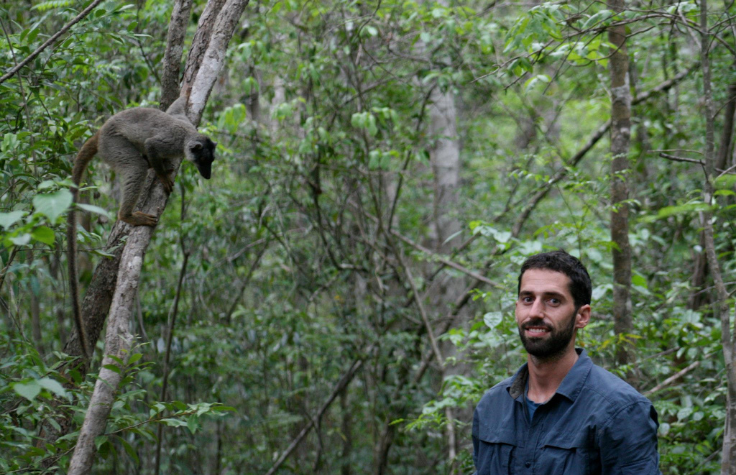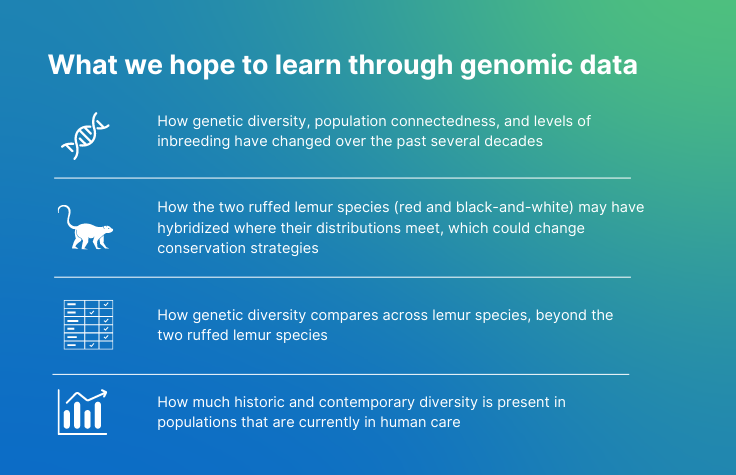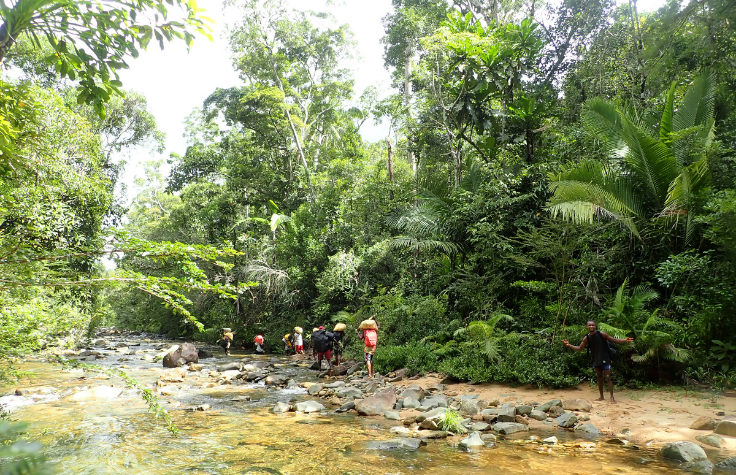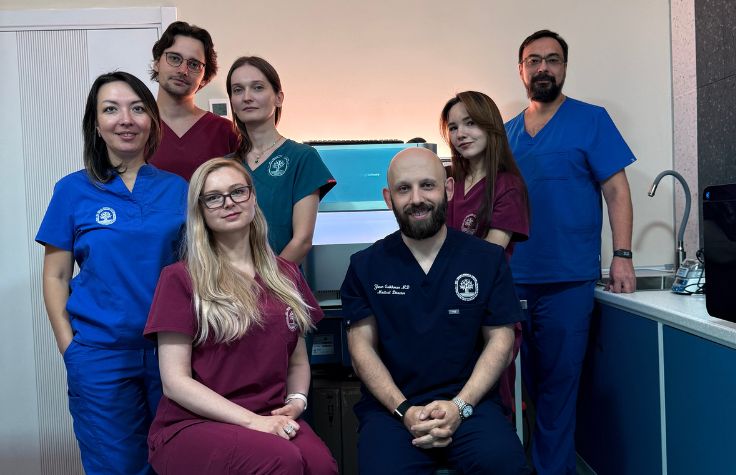
29 October 2021
In the 1960s, with the intent to conserve a rare species of primate, the San Diego Zoo initiated a successful breeding program with red ruffed lemurs (varecia rubra) from Madagascar. After the establishment of its in-house research effort, the Zoo also elected to freeze cells from that founding population and their descendants and store them in a facility called the Frozen Zoo. Long before the Human Genome Project, next-generation sequencing, or even the proliferation of the personal computer, the team at the Zoo thought to bank living cells and other genetic material. “This is something that only the San Diego Zoo has,” says Tim Eppley, a postdoctoral research fellow for the San Diego Zoo Wildlife Alliance (SDZWA). “It’s really incredible that they had the foresight to start collecting samples when they really couldn’t do much with them.”
Today, SDZWA, Illumina’s iConserve program, and universities in Spain and Madagascar are collaborating to assemble the first complete, high-quality red ruffed lemur genome and assess how genetic diversity and population connectedness have changed over time. This unique project will help us understand what we can do to conserve the most threatened group of mammals on earth.
According to the International Union for Conservation of Nature (IUCN), 98 percent of the 113 known lemur species are threatened with extinction. Population numbers are not entirely known, but a few species in the lemur family do have an exact count. For example, there are only 19 Northern sportive lemurs left, and they live in a very small area.
Lemurs are endemic to Madagascar, an island in the Indian Ocean, 800 miles off the coast of East Africa. “Madagascar is often referred to as the eighth continent because everything there is so unique and exists nowhere else on earth,” says Eppley. “But Madagascar has less than 10 percent of its original forest remaining. It’s a very, very small sliver of what used to be there.”
The red ruffed lemur and the trees of Madagascar have a co-dependent relationship. Because its diet is primarily fruit-based, the lemur depends on the trees in the forest. In turn, the lemur not only disseminates the seeds, but the seeds in its scat are more viable. “Lemurs act as the gardeners of the forest. They play a really, really critical role for a lot of botanical species in Madagascar,” says Eppley.

But lemurs face a lot of challenges in their own environment. Lemurs are a female-dominated society. When they travel, the females take the lead. So when hunters set up traps, the females are the first to be ensnared. “That results in a sex skew in those populations. When you end up with a lot more males, it’s not going to help the population grow,” says Eppley. Add to that, the vast majority of lemurs can only become pregnant during one 48- to 72-hour period in an entire year. If a cyclone or other weather event ruins their ripe fruits, they may not reproduce that year. “Even a single weather event can throw the whole thing off.”
Using genomics to impact conservation
The SDZWA is leading what is the most comprehensive study ever done on a lemur species. They have collected samples from 73 wild or captive lemurs (mostly red-ruffed) born between 1959 and the present. The samples come from the Frozen Zoo, partnering universities, and the Madagascar National Parks, and they come in the form of blood, tissue, frozen cells, or scat.
Earlier this year, the Zoo sent the samples to Illumina laboratories for sequencing. The data was then sent to the Institut de Biologia Evolutiva in Barcelona, Spain where Marc Palmada Flores, a PhD candidate at the Pompeu Fabra University is building the genome assembly. “I am really looking forward to seeing how this genome assembly is used to help conserve this particular species of lemur and to start having more real field studies where the resequencing data will serve as tools to better understand a species status,” says Flores.

Flores is assembling a new, high-quality reference genome for the red ruffed lemur as well as a draft reference genome for black-and-white ruffed lemurs and six additional lemur species.
When the reference genomes are complete, they will be sent to Dr. Aryn Wilder, a researcher at SDZWA, who will also use the high-coverage genome resequencing data for comparative genomic analysis. “Some of the samples were collected more than 50 years ago,” says Wilder, “and they may reflect the diversity present in healthy populations before widespread deforestation.” Wilder hopes the information will provide a barometer for how much genomic erosion may have occurred. This will help direct limited resources toward maximizing the retention of any remaining diversity. “The data are also a springboard for designing capture arrays for non-invasive samples (e.g. fecal samples) that can be used to address behavioral and ecological questions about these species.”
The reference genome will also inform breeding practices at zoos. “The data will help refine pedigrees for managing the captive populations,” says Wilder. “Pedigrees are used to help select breeding pairs to minimize inbreeding and retain genetic diversity.”

Celebrating the lemur
World Lemur Day (October 29, 2021) began with a festival in 2014 in Antananarivo, Madagascar. Today, it is celebrated worldwide in order to bring awareness to the plight of the lemur and attract ecotourists to the island.
Tim Eppley will return to Madagascar in three weeks. There, in addition to working with local universities, he’ll manage teams of people to count lemurs, collar them, collect feces, and assess habitat conditions. They study the tree diversity in various areas and try to understand any hunting pressures that may exist, sometimes noting traps or even gun shells.
A large portion of Eppley’s job involves working with local agencies like Groupe d’ étude et de recherche sur les primates (GERP) in Madagascar. Malagasy students lead teams into very remote areas where surveys have never been conducted. For these teams, they hire people from the nearest villages and train them on data collection techniques, providing employment and short-term economic relief. Eppley says it’s more money than they would ever make, as 90 percent of the population lives on less than $1.90 a day.
Because of poverty and political instability, the forests are disappearing fast. “The local people understand that the forests are important for pure water, for irrigating fields, for protecting animals. They would much rather have the forest, but many people are pushed into a situation where they have to cut down those forests because they need the land to grow rice or they’re clearing land to hunt for subsistence. They need wood to build huts or boats for fishing. So that's why we need to come up with economic alternatives in these areas.”

And there’s a strong economic incentive for the Malagasy to protect the land to bring in the tourists. Eppley believes the Malagasy can rally and motivate, and that wildlife will benefit. “My hope for lemurs is that we continue to see populations grow, that we create corridors and buffer zones and grow these forests so that the lemurs have more area to live. And by doing that, the local populations will try to protect those areas, because that will increase tourism. My hope for Madagascar is that there's a shift, like we’ve seen in Costa Rica.”
That shift required more than fifteen years, and it took a village.
Initiatives like Illumina’s iConserve program were founded to bring the global community together to accelerate environmental and wildlife conservation.
“Genomics has become the tool of this century to help conserve biodiversity and ensure the health of our planet,” says Karine A. Viaud-Martinez, Associate Director at the Illumina Laboratory Services. “We believe that Illumina is uniquely positioned to advance some key projects and guarantee that the tools and data are available to anyone.”
Some of the iConserve work consists of facilitating research in comparative genomics of various species, which provide structure to cataloging biodiversity in wild and captive populations. This will ultimately support decisions around species conservation and management.
To read about sequencing the Atlantic bottlenose dolphin, click here.
To learn more about the San Diego Zoo Wildlife Alliance, click here.
To participate in World Lemur Day activities, click here.


